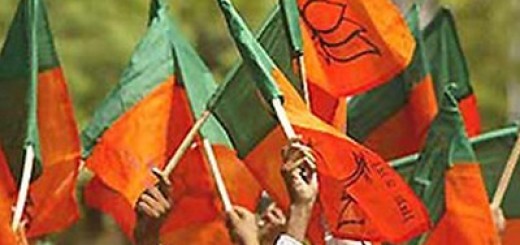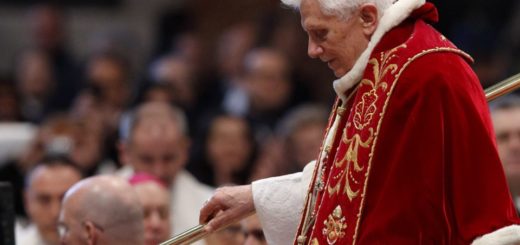World Economic Crisis Due to COVID—19 — Apocalyptic Warning

 SImply great! That's all what I have got to say on this well prepared thesis on the upcoming World Economic crises. Shri Varghese, is an voracious reader who chases every school of thought, emerging here on the surface. His articles are blessed with quotes and references all over. Love you Varghese sir for this enlightening attempt. Joseph Mattappally (asso. editor CCV)
SImply great! That's all what I have got to say on this well prepared thesis on the upcoming World Economic crises. Shri Varghese, is an voracious reader who chases every school of thought, emerging here on the surface. His articles are blessed with quotes and references all over. Love you Varghese sir for this enlightening attempt. Joseph Mattappally (asso. editor CCV)
A Personal Note: The article below has been prepared in the background of my experience in the Central Bank of the country viz., RBI, for about four decades, and the not-so insignificant exposure to economics including international trade and international politics. I have taken due to present a cogent picture within the limitations of my knowledge.
I lived in Mumbai for 18 years and Chennai 6 years, visited Delhi and Kolkata many times. I had the opportunity to be in the undeveloped drought-prone Bankura district of West Bengal.
I would be grateful if the enlightened readers of CCV would come forward with their considered opinions, for and against, the views on this article. Critical views against are the most useful ones.
A big thank you all.
World Economic Crisis Due to COVID—19 — Apocalyptic Warning
Economist Nouriel Roubini, who accurately predicted the 2008 bursting of the housing bubble (mortgage loans) in the U. S. has issued dire warning about what is in store for the world economy in the wake of COVID – 19 pandemic.
Roubini predicts that the current recession will morph into a full- scale economic depression that will devastate societies across the globe. He foresees a slow, lacklustre, “U” shaped economic rebound in the pandemic’s immediate aftermath, but insists that this recovery will collapse beneath the weight of the global economy’s debt burden, particularly the massive private debts, especially that arose after 2008 crash. The COVID- 19 crisis will durably depress consumption and thus weaken the anticipated short-lived recovery.
Economic conditions will worsen even more, when higher inflation kicks in and trade arrangements breakdown among countries, more particularly between U. S. and China. On top of all, the disasters brought on by climate change may hammer the economies even further in the coming years.
The science says that these extreme events are becoming more frequent, and are coming further inland, and are doing more damage. And they are happening right now, and not 30 years hence.
Although deficit spending is necessary in the present crisis, and may appear benign at the onset of recovery, it is laying the kindling for an inflationary conflagration. Negative supply shocks are going to raise the cost of real resources, even as hyper exploited workers suffer perpetual wage and benefit declines. Prices will rise, but growth will peter out. Ordinary people will be forced to pare back their consumption more and more. Stagflation will beget depression; and the resultant depression will beget more depression. And through it all, humanity will be beset by unnatural disasters, from extreme weather events wrought about by man-made climate change to pandemics induced by the disruption of natural ecosystems.
Roubini feels that, after a decade of misery, we may get around to developing a “more inclusive, cooperative, and stable international order”. He adds “any happy ending assumes that we find a way to survive” the immediate hard times.
Roubini says that his prediction is not for 2020 alone but for the middle of the coming decade as well. In the short run, the markets may exhibit upward trend because of the massive monetary and fiscal stimulus. People also expect that the contagion will go away, and there will be a vaccine at some point down the line.
The factory of the future is going to be one person manning 1,000 robots and a second person cleaning the floor. And eventually the guy cleaning the floor will be replaced by a Roomba because a Roomba doesn’t ask for benefits or bathroom breaks or get sick and can work 24/7.
In the US 35 to 40 million workers have already lost their jobs. If ever they get back employment, it will be part-time ones, without benefits; without fair wages. That is the only way for the corporates to survive. Because they are so highly leveraged already, they need to cut costs and the first area they cut cost is wages with less of labour hired. But on the reverse side, money spent on labour is re-spent on consumption. In a situation of low wages, house holds will be left with less income. Even then, they will be compelled to save to protect themselves from another coronavirus type crisis; the result, consumption level will go down further. That is the rationale for the prediction of a “U” shaped recovery.
There is an underlying conflict between workers and capital. For a decade workers have been screwed. Now they will be screwed more. There is also conflict between small business and large business. Millions of small businesses are going to go bankrupt. How can they survive with tiny margins and less space in the market? Thus small businesses are likely to disappear in the post coronavirus economy.
There is a huge difference between the 2008 global financial crisis and the coronavirus crisis because the former was a crisis of aggregate demand. In the short run to avoid depression, fiscal stimulus is necessary. But there will be inflation in the post coronavirus world because of negative supply shocks. Globalisation is going to become de-globalisation due to decoupling, protectionism, fragmentation and so on.
One of the forces that will bring a Global Depression, is man-made disasters. The global climate change, which is producing more extreme weather phenomena —on one side, hurricanes, typhoons and floods; on the other side, fires, desertification and agricultural collapse and natural disasters. The science says these extremes are becoming more frequent; are coming far inland, and doing more damage. And they will happen now, not in the future.
The economic costs of climate change are becoming worse. For example, Indonesia has decided to move its capital out of Jakarta to some where inland because the present capital is going to be fully flooded.
And there are pandemics. These are man-made disasters on account of the destruction of ecosystems of animals; wild animals are increasingly put in cages —the bats and pangolins and all other wild life — and they interact and create viruses which then spread to humans. HIV, SARS, MERS, Swine Flu, Zika, Ebola, now Coronavirus. There’s is a connection between global climate change and pandemics. Suppose the permafrost in Siberia melts; viruses that had been in there since the Stone Age may come out and spread out rapidly. We don’t know what kind of nasty stuff is going to get out. We don’t even know what’s coming.
The Indian scenario
Covid-19 has already bared its ferocious fangs and started its lethal bites on a large number of our people. Those who suffer most are the daily wage earners, migrant and seasonal workers. For the “aam aadmi” living in the overcrowded metros and in the remote far flung villages of India, the situation is reported to be very grim already. Their plight is similar to falling from the frying pan to the fire.
Unemployment level of the able-bodied out of India’s population of 1.3 billion is estimated at 51%. With the downswing in economic activities due to the pandemic Coronavirus, the economic turmoil and its corollary daily life has become unbearable for the ordinary unprotected citizens of our country as never before. The people below the poverty line, is counted at 22% of the total population. Malnutrition, especially among children, is very acute.
Which is the real India?
Even if we look very closely with eagle eyes, can we find the soul of India in the Malabar Hill, Worli Seaface, Pali Hill-Bandra, Rabindra Nagar/Khan Market/Lodhi Garden area in Delhi; Alipore and the up-market areas of Kolkata and in the areas inhabited by the affluent and the powerful, elsewhere with their opulent life style in palatial mansions and their glitz, their steel or aluminium clad glass facades? The answer seems to be an EMPHATIC NO.
The real raw India lives in the dirty vermin-infested footpaths of Mumbai, Delhi, Kolkata and other metros, where the marginalised live, procreate, defecate and die unmourned, unknown and unlamented. They struggle to cover themselves in rags and sleep under the blanket of the dark night and have nightmares. They are compelled to do intimate doings, which the affluent do in the privacy of their weather controlled bed rooms on spring mattresses or on water beds. The deprived has no potable water to drink and to wash their clothes and to take baths, they don’t have the luxury of indoor glass bottomed swimming pools to gambol. No offence is meant against the lucky ones, but only trying to paint the stark reality of the suffering majority.
In the heavy monsoon downpour, the have-nots struggle to protect themselves with thin plastic sheets. They do odd jobs for a pittance in unbearable hot and steamy weather just for survival. Can they dine at the five star Taj at the Gateway of India or the equally posh hotels of India on caviar and lobsters accompanied by vintage wines, cognacs and many many years matured scotch whiskies? NOT BY ANY CHANCE, SORRY? Can they loiter around the Central Vista coming up in India’s capital gawking at its breathtaking views? Can they ever ride the much touted bullet train? Again a big NO?
Another major chunk of India’s population lives in the miserable dwellings in the vast, congested. ramshackle slums of Dharavi, Govandi, Kurla and others spread all over India. How can there be social distancing and home quarantine for these underprivileged packed like sardines in small unventilated single roomed quarters?. Their dwellings exist cheek by jowl in narrow lanes. They are compelled to throw caution to the winds for the sake of their sheer existence.
In the real India, there are millions of honest hard working people, the so -called middle class, just survive in single bed room tenements in the cities spread across the country. They are compelled to commute long distances for hours to reach their work places in jam-packed suburban trains or other equally over crowded modes of transport and return home terribly exhausted.
The hapless migrant labourers with their womenfolk and children have been walking the unending kilometers and kilometres, hungry and thirsty, under the hot sun without water to drink and food in their bellies. The only aim of these desperate people is to reach in the places of their birth and be among their loved ones so that, if they die, their dead bodies are not thrown into the way side ditches for stray dogs to eat. But many perish on the way, run over by trains, knocked down dead by speeding trucks or die of hunger or thirst or sheer exhaustion. Even if they succeed in reaching their villages, what awaits them is hunger, deprivation and desperation with very few avenues for gainful work with adequate income for making a semblance of living.
Santhosh K. Mehrotra, Professor of Economics at the Centre for Informal Sector and Labour Studies at JNU in his recently launched book “ Reviving Jobs: An Agenda For Growth” says that the current reverse migration may set the country back by 15 years. He has pointed out that the economic stimulus package by the present government is minuscule compared to the one rolled out by the earlier Manmohan government during the 2008 crisis. The fiscal package announced post-Covid is less than 1% of the GDP though the economic and job crisis now is much deeper than in 2008.
He adds that the stimulus package now announced is heavily geared to bank loans. Then why do an entrepreneur borrow from a bank when he knows for sure that demand is already extremely low in the economy, both domestically and internationally? The only people queuing up for bank credit could be unscrupulous ones for diversion of funds for nefarious purposes never to repay. This global economic crisis is much worse than the 2008 one. IF GOVERNMENT DOES’NT PUT MONEY INTO THE HANDS OF PEOPLE, NO REVIVAL OF DEMAND IS POSSIBLE.
He adds further: the number of unemployed has gone up from about 30 million in 2018 to 122 million in April 2020, unprecedented in Indian history. Some jobs will come back post-lockdown. But how many of them will come back depends on the quality of the stimulus. If the new entrants into the job market; the better educated ones, at a rate of more than 5 million per annum, the country has to create at least 5 million non-agricultural jobs to break even.
This is a tall order considering the apparently lop sided priorities of the present government, on the face of it, they seem keen on headline grabbing and Tuglaq model schemes such as Central Vista beatification and remodelling, bullet trains, erecting mammoth statues of their favourite heroes. In the olden times, the proletariat of Rome was kept under control by bread and circuses, but it seems in our country, circuses alone are given out.
Unthought steps such as demonetisation of higher value bank notes, the hurried and tardy implementation of GST and the unplanned sudden introduction of the lockdown without giving breathing time for the vast majority of India’s population, have already pushed the country into the quagmire of unsolvable problems. Most of us may have been put at the brink of abyss.
If any shred of humanity is left with our rulers, will they stop chasing grandiose schemes, but instead, as a short term measure, put adequate cash into the hands of the cashless poor so that they can buy food and other essentials? As a long term measure, job-oriented schemes paying adequate monetary compensation and simultaneous production of common consumption goods (wage goods) and provision of essential services such as water, electricity and passable roads should be of prime priority.
Why not build habitable prefabricated simple houses, say with a kitchen, a living room, two bed rooms with attached toilets with roof top solar panels with power generation capacity of 3KW and the requisite accessories? Ideally, the houses may be built, least two meters apart with patches of land for cultivation of vegetables of daily consumption. Other accompaniments necessary for daily life of the ordinary people are also called for. These steps are bound to generate gainful employment and lasting assets creation.
We have to protect the territorial integrity of our country and our way of life. All the same fruitful negotiations and adjustments with our neighbours seem a better and viable option. Of course credible deterrence is required to be put in place. But there are limits to this paradigm. In a crunch situation, no country will be able to save all its citizens with its arsenal of nuclear weapons, ballistic missiles, laser beams and the most advanced fighter planes.
It is nice to dream of an Indian landing in the Moon or living in Mars. But on the parched land our country, pathetic cries and wailing of the down trodden will rise in a roaring crescendo renting the air and sending vibrations throughout the entire surface of the land we live?
We may be able to hide the ugly realities for a period and take shelter behind sanctimonious humbugs for some time. But not for ever. One day soon, there may happen catastrophic upheavals that may shake the very foundations of our society with disastrous consequences.
The placebos
No tweaking of the Repo rates, will save India out of the stagnancy and even, negative economic growth. It may end up in ballooning debt trap which has already bursting at the seams. Even if the funds are properly utilised, the gestation period necessary for manufacturing activity will slow down the efforts in the short run. IN THE LONG RUN WE ALL ARE DEAD. What is required are quick yielding projects manufacturing essential goods and services. The people to be rescued are not some crony capitalists in trouble owing to their misdeeds and gross inefficiency?
Pumping cheap bank credit without oversight is a dangerous proposition. Let the powers in control don’t forget that the funds provided to the unscrupulous characters are squeezed from the ordinary people by way of taxes and other levies, when they buy their food grains, pulses and their cooking oil and kerosene for their oil lamps.
History reveals that funds disbursed by banks are wantonly diverted by the likes of Mallya, Neerav Modi, Choksi and others for dining, wining and womanising, gambolling with scantily attired topless models and call girls, yachting and pleasing the powers in control with goodies of all types.
An edifice to last must be built on strong foundation. The stones for this purpose are plenty available in our villages; the very hearts and souls of India. Once suitable infrastructure is put in place and the rural people are given appropriate training and leadership, they can find gainful employment locally, thereby stop the exodus to the already overburdened metros.
The “trickle down benefit based Reagonomics” has been unceremoniously dumped at the bottom of the economic and financial cess pool never to be retrieved; Crony Capitalism has performed the last rites. In India wealth is grabbed by the unscrupulous, greedy profit mad merchant class and manipulators of stock marker aided by brokers. Real wealth is seldom created in real terms in the manner of Steve Jobs, and now Elon Musk, and other innovators. The much touted GDP of India seems to be statistical juggling. Accounting entries in the ledgers of corporates could be mere figures. The balance sheets of many business concerns hide more than they reveal. This has been the experience of mine in the course of inspection of banks and analysis of company balance sheets.
The dire predictions of Roubini is applicable more to India. The recent cyclone Amphan in the Bay of Bengal, which devastated Kolkata and surrounding areas is a portent of bad things to come. The vulnerable citizens of our country don’t have any financial safety net as in the developed economies. Our priorities seem to be not “aam aadmi” oriented. We may wake up rudely from the make believe world that seems to have been created around us.


















Mr Varghese Pamplanil's erudite article is very informative and enlightening. But at the same time it only (including the experts he has quoted) spreads gloom without any cheer. What more doomsday forecast do we need when the world especially countries like India are already pushed to the wall with no other option but to fight to survive? I would have liked possible antidotes too for making a turnaround from this morbid state of affairs, over and above his clinical analysis of calling a spade a spade. It is so uncharacterstic of a strong-minded man like him abjectly surrender to fate "IN THE LONG RUN WE ALL ARE DEAD." I had exepcted him to use his rich reservoir of four-decades expertise in the Reserve Bank of India to suggest measures to counter this economic slide, brought about in the main by China and its accomplice World Health Organsation whic is still carrying on glorifying Coronavirus and painting an ominous picture. This includes warning those nations which are attemping to come out of the Lockdown and open up economic and normal activities. World Health Organisation does not have to earn a single dollar – it thrives on donations from its members (reportedly four million dollars from the US alons – this has been suspended by the Trump administration for WHO toeing the Chinese line). Mr Varghese has although suggested injecting the economy by direct cash transfers to the bank accounts of the poor and migrant workers. He has also very rightly suggested eco-friendly, cost-effective pre-fabricated houses for the masses. What about Preventive Health Measures like Yoga, Exercise, Swimming, cutting down junk foods, eating organic foods as far as possible, to build one's immunity. In the absence of the right combination of medicines or a viccine which is not on the horizon, ultimately it is one's immunity that will stand in good stead in the Coronavirus Pandemic or for that matter in any epidemic. Indians are known for their resilience and innovative skills. With all due respect to Mr Varghese and the experts he has quoted I am sure these two inborn skills will make us beat all doomsday predictions. In these times of the Pandemic, we need to unearth experts who can give us viable suggestions to effectively combat if not overcome, the total impact of economic slowdown hastened by COVID-19. I would call the virus CHINA-WHO 19.